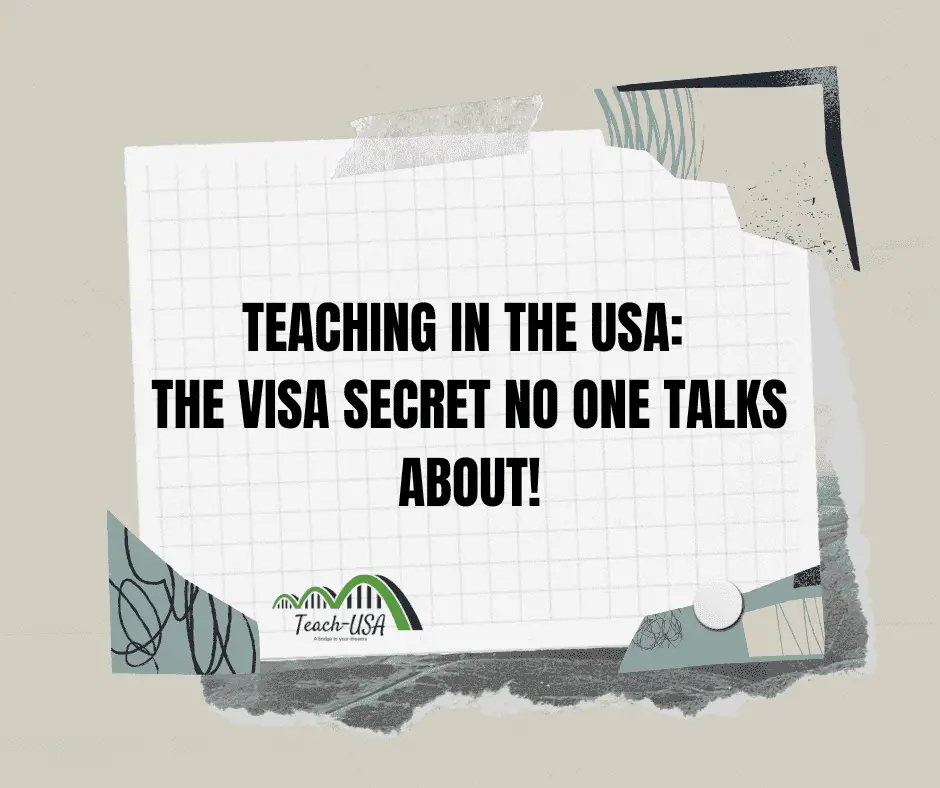So, you’ve set your sights on teaching in the U.S.? You’re excited, motivated, and ready to embrace the American dream. But wait—before you pack your bags, there’s a visa secret that no one seems to talk about!
If you’re an international teacher, you’ve probably heard about the J-1 visa and the H-1B visa. They’re both legitimate pathways, but what many teachers don’t realize is how these visas affect their long-term plans. Let’s uncover the hidden truth.
The J-1 Visa Trap: What No One Tells You
The J-1 visa is the most common route for international teachers in the U.S., and there’s a good reason why: it’s easier to get hired on a J-1 visa. Many school districts prefer this option because it requires less commitment and no long-term sponsorship costs. But here’s what many teachers don’t realize:
✅ You Must Return Home – After completing your program, you’re required to return to your home country for at least two years due to the 212(e) home residency rule. Unless you secure a waiver, this can pause your teaching career in the U.S.
✅ No Direct Transition to a Green Card – The J-1 visa does not automatically lead to permanent residency. If your goal is to stay in the U.S. long-term, you’ll need to find an employer willing to sponsor an H-1B or another work visa—which isn’t always easy.
✅ Limited Extensions – Even if your school loves you and you love teaching in the U.S., the J-1 has a strict time limit. Once you max out the five years, you either leave or find a legal workaround.
The H-1B Visa: The Road Less Traveled
The H-1B visa provides a more secure path, but it’s much harder to obtain. Here’s why:
🔹 No Home Residency Requirement – Unlike the J-1, the H-1B visa doesn’t require you to return home after a set number of years.
🔹 A Path to a Green Card – Schools can sponsor H-1B teachers for permanent residency, making it a better option for those who want to settle in the U.S.
🔹 The Hard Part? Finding a Sponsor – Many schools avoid sponsoring H-1B teachers because it costs money and involves complex legal paperwork. Unlike the J-1, where a third-party sponsor handles the visa process, the H-1B puts the burden on the school district. As a result, most schools choose the J-1 route instead.
The Visa Secret? Plan Ahead!
Most teachers jump into the J-1 program without fully understanding what happens after. If you’re serious about teaching in the U.S. for the long haul, you need a strategy:
📌 Start Early – Research waiver options before your J-1 visa expires.
📌 Find an H-1B Sponsor (If Possible) – Some schools do sponsor H-1B teachers, but you need to start looking early.
📌 Network with Other Teachers – Connect with those who’ve successfully transitioned from J-1 to H-1B or Green Card.
The biggest visa secret? It’s easier to teach in the U.S. on a J-1 visa, but that doesn’t mean it’s the best option for long-term plans. Schools prefer the J-1 route because it’s cheaper and has less legal hassle. If your dream is to stay in the U.S. long-term, you need to think beyond your first visa and start planning for your future now.
—
If you want to teach in the US, please email your resume to apply@teach-usa.net.

